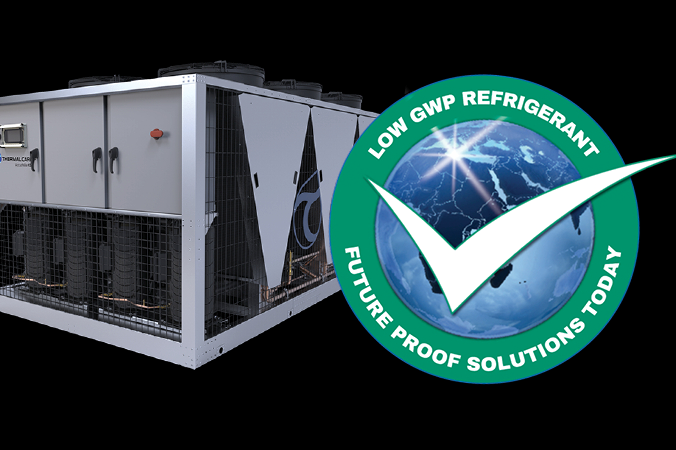Chiller Lines Updated to EPA-Approved Refrigerants
Thermal Care’s chillers now utilize EPA-approved low Global Warming Potential (GWP) RŌĆÉ454B and RŌĆÉ513A refrigerants.
Thermal Care’s chillers now utilize EPA-approved low Global Warming Potential (GWP) RŌĆÉ454B and RŌĆÉ513A refrigerants, with the company making the switch in advance of legislation that will phase out highŌĆÉGWP refrigerants that contribute to climate change.
Thermal Care points out that governments around the world are seeking to phase out refrigerants like RŌĆÉ134a and RŌĆÉ410A. An EPA rule proposal states that all high-GWP Hydrofluorocarbons (HFCs), including R134a, R404A and R410A, will be banned in most new refrigeration equipment effective Jan. 1, 2025. In 2024, 12 states will require GWP refrigerants and 11 more are considering it, according to Thermal Care.
LowŌĆÉGWP refrigerants have different thermodynamic properties than highŌĆÉGWP refrigerants, requiring component changes in equipment such as chillers. Thermal Care says it has researched and prepared for these changes for the past two years beginning to implement multirefrigerant compressors in early 2023. The company says this enables it to offer lowŌĆÉGWP compliant products now that have the same cooling capacities and physical dimensions as its previous chiller offerings.

Thermal Care’s chillers now utilize EPA-approved low Global Warming Potential (GWP) RŌĆÉ454B and RŌĆÉ513A refrigerants. Photo Credit: Thermal Care
Related Content
-
Thermal Care Names New Regional Manager
The process-cooling technology supplier has appointed Avi Bromberg to manage equipment sales and support in the MidŌĆÉAtlantic, New England, Eastern Canada and the Caribbean.
-
Temperature Control: What You Need to Know to Comply With New Cooling-Fluid Regs
Beginning the first of this year, 12 states are following EPA bans on potentially damaging cooling fluids. Chiller suppliers have adjusted equipment designs to accommodate the new regulations. Here’s what all this means to processors.
-
Captive Molder Beefs Up Auxiliaries to Boost Quality, Consistency
SeeScan adds conveying, drying, feeding and chilling technologies to improve quality — and enhance employee safety — in production of its underground/underwater inspection systems.


